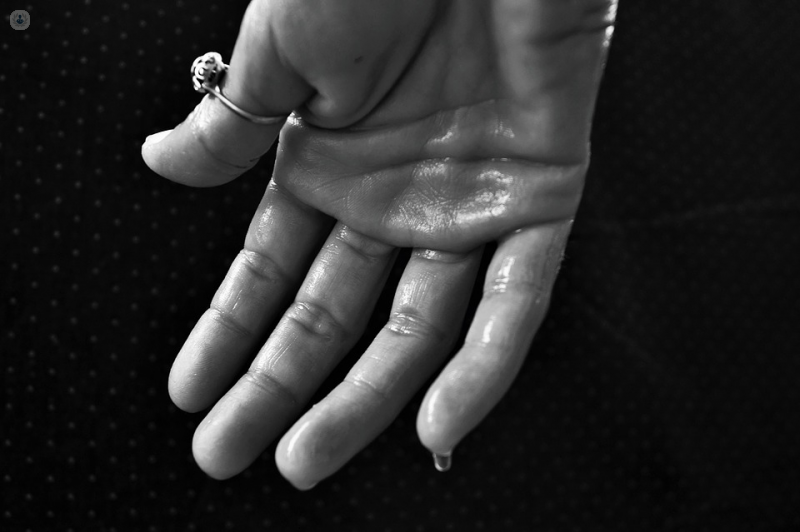

What is hyperhidrosis? What are the types?
Hyperhidrosis is a condition characterized by excessive sweating. Sweating, also called perspiration, is a skin function that helps to maintain body temperature constant. However, uncontrolled unpredictable excessive sweating , i.e. hyperhidrosis, can adversely affect social and professional relationships.

People with hyperhidrosis have overactive sweat glands. Their uncontrolled sweating can become problematic, from an emotional as well as physical viewpoint, and interfere with their everyday life as the condition develops. Hence, many people with hyperhidrosis want to avoid situations that involve physical contact, e.g. greeting somebody with a handshake. Similarly, they tend to restrict their arm movements and adopt rigid postures to hide sweating in their armpits. Among the habits that people with this condition develop, a common one is changing clothes several times a day.
Hyperhidrosis may affect only specific parts of the body such as the armpits (axillary hyperhidrosis), palms of hands and soles of feet (palmoplantar hyperhidrosis) or the face (gustatory hyperhidrosis), or the whole body (generalized hyperhidrosis). It may be focal, affecting an area ≤ 100 cm2, or generalized, affecting an area > 100 cm2.
Symptoms of hyperhidrosis
The symptoms are readily apparent: excessive, uncontrolled sweating in different parts of the body with no apparent cause.
What are the causes of hyperhidrosis?
Hyperhidrosis may be primary or secondary. Primary hyperhidrosis is usually more localized, and the cause is unknown; it is obvious however that the sympathetic nervous system is overactive and the sweat response is excessive. Feeling tense or nervous can make the symptoms worse. In many patients, a positive feedback loop develops: they become nervous when they realize that they have started sweating, which makes them sweat more, which makes them more nervous….
Secondary hyperhidrosis is the result of an underlying clinical situation and it tends to affect the body in a more generalized manner: it can appear at different stages of the patient’s life in association with different habits, illnesses or problems (e.g. menopause, certain drugs or medications, thyroid gland problems, tumours, etc).
Can it be prevented?
Primary hyperhidrosis cannot be prevented. Secondary hyperhidrosis is associated with another clinical problem and if the underlying problem is controlled, hyperhidrosis may be better controlled.
What is the treatment?
There are currently many varied treatments for hyperhidrosis:
- Treatment of hyperhidrosis with botulinum toxin: this is a straightforward treatment that can be applied to the armpits, the palms of the hand and the soles of the feet. The toxin, injected using very fine needles, blocks the function of the sweat glands, such that sweat production in the area is lowered. The treatment usually takes about one hour and it is effective for around 6 months.
- Medico-dermatological treatments: aluminium chloride is often used as an antiperspirant, but it may cause skin irritation. Anticholinergic substances are also used, but they may have side effects.
- Surgical treatments: one technique is to eliminate the sweat glands using one of several methods. Another procedure is endoscopic thoracic sympathectomy, in which the principal thoracic ganglia of the paravertebral chain innervating the skin region that requires treatment are rendered useless. Although this technique is highly effective, compensatory sweating may develop whereby sweating starts to occur in areas that did not sweat before surgery.
